
We are excited that the Roads Scholar Level 2 program development is finished! We will continue to offer these Level 2 classes at the spring and fall Street Maintenance and Collection Systems schools, and will now be offering classes each year at locations throughout the state.
The fall 2016 Roads Scholar classes have been scheduled and are open for registration:
Level 1 Classes:
-
RS-3 Paving Materials and RS-4 Environmental BMPs will be offered in Bend at the Fall Street Maintenance and Collection System school, October 4-6.
-
RS-5 Asphalt Pavement Maintenance 1, RS-6 Asphalt Pavement Maintenance 2, RS-7 Effective Communication Skills, and RS-8 Environmental BMPs 2 are being offered at multiple locations on the west side of the Cascades.
Level 2 Classes:
-
RS-12 Workplace Safety Training 2 will be offered in Hillsboro and Bend.
-
RS-14 Roadway Safety Fundamentals 1 will be offered in Bend at the Fall Street Maintenance and Collection System School, October 4-6.
-
RS-18 Winter Road Maintenance will be offered in Hillsboro.
Class information and registration are available at http://www.oregon.gov/ODOT/TD/TP_T2/Pages/Roads-Scholar-Class-Signup.aspx.
Information and registration for the fall Street Maintenance and Collection System school is available at http://oregon.apwa.net/EventDetails/9088.
In June, we celebrated the second group of Roads Scholar Level 2 graduates. We now have 477 Level 1 graduates and 13 individuals who have completed both Level 1 and Level 2 Roads Scholar Programs! Congratulations to each individual for having the endurance to complete each program and a big thank you to the agencies that support their employees and the T2 program by sending employees to the Roads Scholar classes.
|

The Oregon T2 Center is recruiting for a part-time Circuit Rider/trainer. Any are encouraged to apply that may be interested in this position and currently has or can attain their Traffic Control Supervisor (TCS) certification within 6 months of hire.
The announcement with qualifications can be viewed at: https://www.governmentjobs.com/careers/oregon/jobs/1543684/training-and-development-specialist-2-circuit-rider-odot16-0086oc
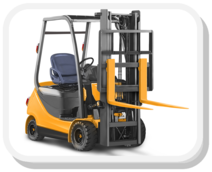 |
|
The T2 Center is proud to be offering the initial forklift certification class.
This is a basic forklift class geared toward establishing a sound foundation and developing the skills of the inexperienced or novice forklift operator. The 8 hour class consists of 2½ hours of classroom time with a written test followed by individual operator evaluation. Class size is limited to 10-15 participants per session. Certificate is awarded upon completion of the class and adequate written test and hands-on evaluation scores.
To schedule a class for your agency, contact us at (503) 986-2855 or by email.
|
 The 2016 Emergency Response Guidebook provides first responders with a go-to manual to help deal with hazmat transportation accidents during the critical first 30 minutes. The US DOT's goal is to place an ERG in every public emergency service vehicle nationwide. To date, nearly 14.5 million free copies have been distributed to the emergency response community through state emergency management coordinators.
PDF Guidebook is available at http://www.phmsa.dot.gov/staticfiles/PHMSA/DownloadableFiles/Files/Hazmat/ERG2016.pdf.
To order hardcopies for your agency, contact Linda Milligan at (503) 986-2855 or T2Center@odot.state.or.us.
Also available for PCs, Androids, and iPhones!
First responders, we want your feedback! Submit your name, organization, contact information, and comments to ERGComments@dot.gov.
|
 |
 Tips for Handling Angry Motorists in Work Zones
by Tony Jobanek
Public Works staff who have worked in the right-of-way understand the risks faced every time they step into a street to perform their crucial construction and maintenance operations. All Public Works professionals know that we must ensure our work zones are set up to meet Federal and State safety guidelines, are using all of our PPE and are conducting ourselves in a professional manner for our organizations. We must also accept the fact that motorists sometimes do not appreciate the delays and detours which are an integral part of our ability to safely complete the work in the right-of-way.
We are faced with a motoring public who are increasingly distracted and are less patient on our roadways. There are theories which have attempted to describe the phenomenon of why motorists are more distracted and at times appear more agitated than in year’s past. From an exponential increase in distractions, such as the use of smart phones and texting to the theory that as a society as a whole we just don’t get enough sleep. Whatever the underlying reasons, it is real and can lead to uncomfortable and sometimes dangerous interactions for flaggers and others working in the roadway.
What can you do if faced with an angry motorist in your work zone? First and foremost, the only direct control you have is on how you react to that person and the particular circumstances of the situation. You do not know why they are angry. Perhaps they are frustrated because the flagging stop will make them late for work or an appointment. Maybe they have a family issue they are working through. You just don’t know true reason why, but there are some things you can do to minimize aggravating or escalating the situation.
The following are recommendations to use when dealing with an angry motorist:
- If you are flagging, make sure you know what is happening in the work zone and why your team is performing the work. Many times being able to clearly and concisely explain the delay can help calm down an agitated person.
- Try to smile, acknowledge and be as pleasant as possible toward the angry motorist. It is harder for someone to be upset with a worker who is polite and attentive to their concerns.
- Be willing to apologize to the motorist for the inconvenience. Showing empathy to a person can have a calming effect on a motorist who is agitated or angry.
- Regardless of how irrational a motorist’s statements are, agree with them or at least do not challenge them. If you feel threatened, notify your lead person or supervisor immediately.
- Try to avoid extended eye contact with a hostile motorist, but keep a watchful eye to ensure they do not act in a sudden hostile way either, individually or with their vehicle.
These techniques can assist you in helping to diffuse an angry motorist encounter. Every interaction with the public is unique and requires you to be alert to the potential of a volatile situation and to effectively think on your feet. Anger is an emotional response common in all human beings and can cause a person to be irrational and unreasonable. By remaining professional, not getting drawn in to the other person’s emotional perspective and recognizing when you need to get help from a lead worker or supervisor, you can make a positive impact on ensuring a safer and more positive work experience for you and your team.
|
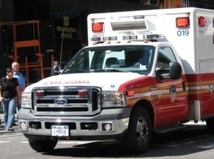 Jeanne M. Jensen, MPA, PE — Sr. Project Manager, Gilbert, Arizona
It is often said that “knowing is half the battle,” and rarely is that more true than when it comes to handling an emergency operation at the municipal or higher level. As the economy has retracted and expanded, each department carries the mantra to do-more-with-less and it is rare that we have the time to go much beyond the daily tasks and projects that keep us busy to connect with our fellow departments. However, when it comes time to respond to those extraordinary events that cross departmental lines, knowing our resources, our colleagues and our capacities could save precious time, improve response, and reduce waste. The challenge for us is to encourage and foster the relationships and understandings between asynchronous departments so that when we are called to serve we can do so in a uniform and intentional capacity.
A lack of understanding when it comes to functional capability can lead to the misallocated resources and inefficiencies of response that are easily avoidable. When it comes to emergency response, the best planners in the world cannot work without a full accounting of the resources at hand. In order to help provide a better cross-agency knowledge and understanding, this article serves as a high-level discussion of plug-in opportunities to better integrate all first responder capabilities to serve the needs of the public.
The largest first response departments in most municipal operations are police, fire, and public works, but it is uncommon to have much interaction between these operations outside of large-scale response events. Creating opportunities to cross-train and develop personal connections can help build those communication networks that will come in handy when you need to activate your Emergency Operations Center and get to work. Much of this comes from shifting the paradigm of first response being limited to police and fire with public works simply bringing the trash bins and street sweepers to the aftermath.
Though there are many ways to bring the parties to the table the reality is that without building and communicating value to all involved parties, there is unlikely to be much depth to the relationships. Some ways to help build mutual understanding is through cross training. Many public works employees require specialized training through programs such as OSHA HAZWOPER, HAZMAT, confined space entry, etc. and these opportunities to share training helps build personal and professional relationships in a genuine environment that encourages the exchange of information and ideas. When possible, the lesser-known department, typically public works, should be leading these events through becoming certified trainers, hosting refresher courses, and sharing workplace examples of applying the principles conveyed.
Additionally, in the field training and exercises can utilize common facilities such as wastewater or water treatment facilities, solid waste collection sites, recycling centers, major industrial facilities, etc. and should have mixed teams of police, fire, and public works employees. The natural tendency to flock to what is familiar should be prevented and teams should be per-selected or drawn to help encourage intermixing of employee groups. Training at existing city facilities can also help in training other departments about what the public works department does, or can do, to support or lead in emergency events. These sites are ideal for conducting confined space entry training, recovery and reconnaissance, etc. because they are already on the home turf of one of the departments, providing insight and deeper understanding of the capacities of the facilities and the staff therein.
The obvious place to bring these groups together is during the tabletop exercises many communities frame to practice emergency response strategies and scenarios in their emergency operations centers. One of the challenges tends to be that public works finds themselves seated at the logistics table and cannot readily weigh in for the other areas such as planning or operations where their expertise may be better suited. A properly developed tabletop exercise will challenge interdepartmental communication and should provide momentum into post-exercise hot-wash discussions that invigorate a mutual desire to better understand the other players in the tabletop.
Planning a tabletop exercise can be extremely daunting and the first reaction of many communities is to simply copy the scenarios used by other groups; but a scenario with unrealistic injects will quickly cause participants to disconnect, lose interest, and check out. In order to really drive a tabletop that highlights potential areas to improve, communication should focus on a realistic, encompassing event that has a sufficient timeline to exceed the standard response mechanisms of the community. A major water main break, a dangerous four-alarm fire, or a terrorist event may seem a good baseline event but these may not engage all the departments in a team-based approach. Larger-scale and longer duration events are more likely to engage each area’s specialty and force some creative teamwork so scenarios involving regionalized flooding, long-term power outages with associated social order challenges, or loss of major infrastructure due to criminal activity are ideal.
After framing the larger scenario, tailored injects can be used to route discussions or engage groups dynamically through the event. Instead of pre-planning the entire scenario, use this opportunity to turn the event into a “choose your own adventure”-style discussion. If the teams lead with a fire department response, throw out an inject that engages police; if police have stretched many of their resources to one area of the scenario, consider an inject that moves crowd control to public works and requires communication during the situation. Though the goal of a tabletop exercise should not be to needlessly fluster participants, a little excitement to keep heart rates up makes the event more memorable and more likely to carry real changes forward in how your departments come together to solve community problems.
It can be tempting for departments to silo their work areas and only begrudgingly share resources and intelligence even within a single agency or city and this tendency should be redirected into a communal energy that acknowledges and values each area’s strengths and abilities and makes the whole greater than the sum of its parts. Freeing up time and budget as available to bring departments together in both the structured, formalized setting of a tabletop exercise and the more informal training scenarios will help foster those one-on-one relationships that could really change the tide of a situation in practice.
Taking the time to personally acknowledge the value of each individual and department will bring the agency together. Conducting regular events that bring disparate resources together and careful management of inter-agency events will grow and foster relationships that extend beyond a late night shared in the emergency operations center. This sense of camaraderie and joint-focus can save resources and efforts which results in a better outcome for the communities we have been called to serve. Acknowledging and respecting our differences, capacities, and dedication gives the multifarious departments a solid foundation for working together. Opportunities to leverage expertise both vertically and laterally within the organization create a respect and understanding that day-to-day operations cannot achieve in our modern lean approach.
Reprinted from APWA Reporter (December 2014)
For information on Oregon's TIM Training program go to http://www.oregon.gov/ODOT/HWY/ITS/Pages/Traffic-Incident-Management.aspx or to register for a FREE class go to http://www.eventbrite.com/o/oregon-tim-responder-training-8950531191. For additional information, contact the T2 Center at (503) 986-2855 or T2Center@odot.state.or.us.
|
The Oregon TIM Responder training program can be delivered in its entirety or through selected modules.
Full version –
Includes Unit 1 through Unit 9 (see descriptions below) full lessons plus tabletop and situational awareness activities. 10 hours total training time.
Modified Version – (suggested)
Includes shortened version of Unit 1 through Unit 9 lessons (see descriptions below) plus tabletop and situational awareness activities. Minimum of 4-hours total training time.
“Drill Night”, “Roll-Call”, “OSHA-Type Safety Meeting” Version – Any combination of lessons
(minimum 2 hours)
Lesson Numbers
- Statistics: Crash Stats, Struck-Bys, Line-of-Duty Deaths
- Incident Scene Terminology, MUTCD, Laws & Standards
- Notification, Response, Arrival, Scene Size-Up, Incident Duration Categories
- Vehicle Safe Positioning, Move It, Work It, Lane +1 Positioning, Zero Buffer
- Scene Safety, Chevrons, Light Shedding, Hi-Vis Apparel,
- Command Responsibilities, ICS Organization, Command Post, Staging
- Traffic Management, Advance Warning, Cones, Flares, Deployable Sign
- Special TIM Situations, Fire, Hybrid & Electric Plug-Ins, HazMat, Medical Helicopters, Evidence, Fatality Incidents
- Clearance Strategies, Tow & Recovery Operations, Push-Pull-Drag, Cargo Removal, Incident Termination Activities
Activity A. - Hands-On Tabletop Activity and TIM Scenario Exercises
Activity B. - Situational Awareness Activity, Exiting Responder Vehicles, Establishing Cone or Flare Taper, Arrow board & Changeable Message Sign Ops
Join us for TIM Training
DateTimesCostLocation
October 18, 19, or 20
October 18, 19, or 20
9:00 a.m. - 11:00 a.m.
1:00 p.m. - 3:00 p.m.
$0
$0
Lake Oswego
Lake Oswego
October 246:00 p.m. - 10:00 p.m.$0Cloverdale
Register for FREE TIM training
In the photo, a private landscape crew is cleaning up vegetation debris alongside the city street. They recognize they are blocking one lane of the two-way street, and have set out garbage cans as a makeshift transition to direct traffic around their truck. There are several poor practices occurring, which could lead to unsafe conditions for both the landscape workers and traffic approaching from either direction.
The cans are not very visible from a distance. They definitely do not meet any temporary traffic control device standard. Instead, cones should be used as safety/channelization devices (min. 18” high).
There are no advance warning signs in place. Perhaps with minimal traffic, at low speeds, a single sign might be appropriate. For higher speeds and/or higher traffic volume, more than one sign could assist in helping create a safer situation. Intermittent flagging might even be needed at some point. Note the double yellow center line on the street. This is a clear indicator of higher volumes and/or speeds of traffic.
Since this is a type of “Moving” operation, the truck warning/flashing lights should be activated as a minimum to assist in distance visibility and approaching vehicle awareness from both directions. As a matter of practice, anytime a vehicle stops or slows in a location/situation such as this, the flashers should be activated.
Whether a private or public operation, basic traffic safety should be practiced. Many agencies require it for all operations on public roads/streets. Does yours? Are businesses such as landscapers aware of them?
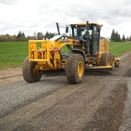 In March, over 80 people from 26 different agencies attended the OACES 2016 Enhanced Gravel Road Treatment Workshop in Redmond, from which Marion County decided to host a 2016 Gravel Road Product Test. For more information on and to view presentations from the 2016 OACES Enhanced Gravel Roads Treatment Workshop, visit http://www.co.marion.or.us/PW/Roads/oacesworkshop/Pages/gravelroadworkshop.aspx.
Marion County is doing side-by-side applications of multiple soil stabilizers, some of which have never been used in Oregon. June 21 - 23, crews applied the first of the eight different products over four test areas. All are invited to review the performance of the products, and also visit the four test areas to see the treated roads. Our focus is addressing public safety, such as wash boarding, as we review these products.
The below web-site has a map of the 4 test areas, list of products with manufactures' contacts web links, cost analysis, and eventually photographs. http://www.co.marion.or.us/PW/Roads/oacesworkshop/Pages/2016GravelRdProductTest.aspx.
|
 October 3-6, 2016
Anaheim, CA
The seven TTAP Centers throughout the U.S., in conjunction with the Federal Highway Administration, bring you the 19th Annual Tribal Transportation Conference. The program for this year's conference is developed to meet your transportation needs. The agenda is set for many opportunities to visit booths and displays during registration, breaks, meals and breakout sessions.
This NTTC 2016 will be held at the Anaheim Marriott Hotel in Anaheim, California. It promises to be an exciting event that brings together tribal, federal, state, and private interests that work in the field of tribal transportation. The conference will provide information and resources for all who are committed to improving the transportation infrastructure of Indian country and the safety of those who live, work and travel the roadways of Indian lands. Come participate, learn, and enjoy the conference.
Who Should Attend: This conference is for tribal leaders, tribal transportation program personnel including directors, planners, engineers, tribal government leadership, including tribal law enforcement officers, federal and state transportation personnel and private transportation professionals.
For more information, go to http://nttc.nijc.org/registration-3/.
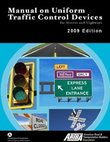 MUTCD Available for Phones and PCs
The MUTCD, which has been administered by the FHWA since 1971, is a compilation of national standards for all traffic control devices, including road markings, highway signs, and traffic signals. It is updated periodically to accommodate the nation’s changing transportation needs and address new safety technologies, traffic control tools and traffic management techniques.
The iBookstore version is viewable from devices such as iPhones, iPads, iPods, and Kindles. Any mobile device can download the MUTCD through the Amazon’s Bookstore application.
A searchable e-book format is available via Apple’s iBookstore, which will allow road managers nationwide to access critical safety information via their smart phone, tablet, laptop or desktop computer.
|
 Videos Use Humor to Promote Work Zone Safety
A new series of videos from the Ontario Road Builders’ Association relies on humor to promote safety in construction work zones. The three videos – The Failure To Merge, The Road Rager and The Speeder – aim to raise awareness about the importance of safe driving in and around work zones. In the videos, construction workers show what it would be like if workers in a traditional office setting encountered reckless drivers. Each video ends with the message, “Wouldn’t happen at your work. Shouldn’t happen at ours.”
|
 AOC County Road Manual is Being Updated
The Association of Oregon Counties County Road Manual describes the nature of the state law, the scope of county options, and some interpretations and examples of procedures. The manual is divided into sixteen chapters including: Roads and Planning, Procedures for Roadwork, Right-of-Ways, Road Classifications, and Traffic Control to name a few. Updates are currently being done to incorporate the newly published 2015 Oregon Revised Statutes.
|
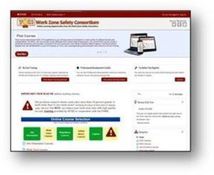 Online Learning Management System (LMS) Developed by ARTBA Work Zone Safety Consortium
The ARTBA Work Zone Safety Consortium On-line Learning Management System was created to provided free training and education to the transportation construction community. These courses, created under an FHWA grant, brought together leaders in government, labor and industry to determine the future in training transportation industry workers.
Individuals can take the courses to improve their knowledge and understanding in specific construction environments and trainers can utilize this system to track the progress of individual students. The system also has the capability to track pre and post testing of students. Students will be awarded a badge upon successful completion of a course.
Participants can take free training in:
- Developing Transportation Management Plans for Work Zones
-
WZ Safety and Mobility Rule
-
TMP Coordination
-
WZ Impacts Assessment
-
TMP Strategies
-
TMP Approval and Implementation
-
TMP Course Wrap-up
Work Zone Temporary Traffic Control Devices (TTCDs)
-
Selection and Use of TTC Signs
-
Selection and Use of Channelizing Devices
-
Advance Warning Area Sign Spacing
-
Temporary Impact Attenuators
-
Tapers
-
Exposure Controls
-
Positive Guidance
Internal Traffic Control Plans (ITCPs)
-
Applying and Understanding Internal Traffic Control Plans ITCPs
-
Worker Safety Strategies
Sight Distances
-
Stopping Sight Distances
-
Decision Sight Distances
-
Intersection Sight Distances
-
Sight Distance Flash Cards
-
FHWA Speed Concept Booklet blocks
|

|